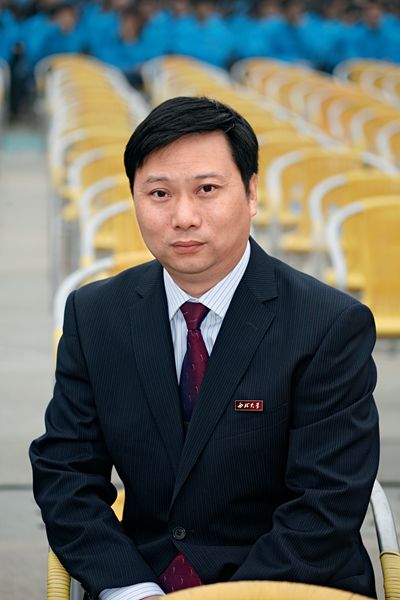Lai Shaocong: Explorer of the Beauty of Geology
China Today by DUAN HAIWANG, December 23, 2016 Adjust font size:
WARM, humorous and passionate about his work, Lai Shaocong is one of the most popular professors at Northwest University. This idealistic scientist of fruitful achievements frequently ventures out to the high mountains with a knapsack on his back.

Lai Shaocong at the 110th anniversary celebration of the founding of Northwest University.
Established in 1939, the Department of Geology of Northwest University, once geared to cultivating the country’s first petroleum geology professionals, was one of the first in China. A teacher at the university since 1996, Lai is now dean of its graduate school. He is also a member of the Seventh Discipline Evaluation Group of the Academic Degrees Committee ofthe State Council, and deputy director of the college geology teaching instruction committee of the Ministry of Education.
His prominent contributions to geological science and teaching won Lai the highest honor of China’s geological industry at the Li Siguang Geological Science Awards at the end of 2015. He expressed gratification at being able to take part in geological scientific research and the cultivation of talents for the country.
Constant Innovations
Lai was admitted to East China Geological Institute (now East China Institute of Technology) in 1979, and has since been involved in geology.
“I had an insatiable curiosity about different kinds of rocks and wanted to understand their secrets,” Lai said.
Rocks on the Qinghai-Tibet Plateau and Qinling Mountains are his main research objects. He regards the Qinghai-Tibet Plateau as a mysterious territory and a natural breeding ground for new geoscientific theories, as well as a golden key to the Earth’s secrets. The plateau is hence his study base. After overcoming numerous difficulties such as high altitude anoxia, he went deep into depopulated zones to conduct systematic field surveys on rock and regional structural evolution and gained research achievements.
“An ordinary looking stone has abundant contents,” Lai observed.
The Qinling Mountains contain one of the most important orogenic belts in China, and Lai and his scientific research team have been focusing on core aspects of its tectonic evolution. After 20 years of constant exploration, they have made significant headway in the study of orogenic structures of Qinling. They also study fundamental characteristics of China’s orogenic belt as well as the basic problem of continental dynamics – topics of great scientific significance.
In the course of his scientific research, Lai has presided over major Natural Science Foundation of China projects, and published more than 200 papers, 60 of them included in the Science Citation Index and 30 in the Engineering Index, as well as three books and five textbooks.